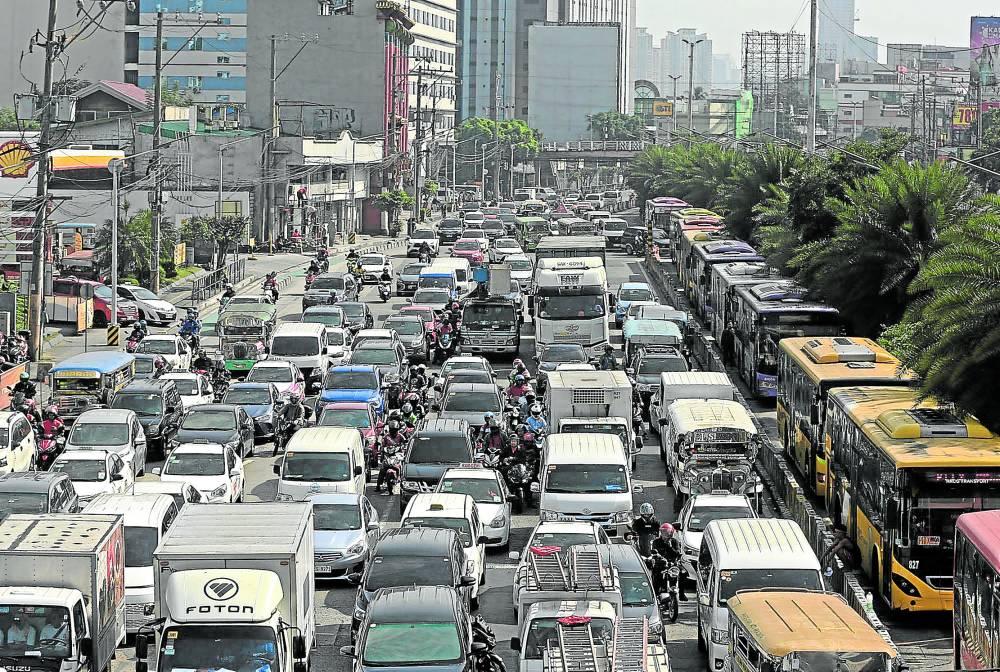MAP: Metro traffic so bad it calls for ‘state of calamity’

Heavy traffic is seen along EDSA in Pasay City. INQUIRER FILE PHOTO / RICHARD A. REYES
The Management Association of the Philippines (MAP) has urged the government to declare a “state of calamity” in Metro Manila in view of its worsening traffic congestion that is currently costing the economy an estimated P3.5 billion a day.
In a statement on Thursday, quoting one of its ranking officers, MAP said conditions with this much impact already qualify for such a declaration, one that should be accompanied by “emergency state relief measures.”
READ: Traffic capital of the world
The group made the call a day after the chair of its transportation and infrastructure committee, Eduardo Yap, represented MAP in a House hearing that tackled the capital region’s perennial problem.
Wanted: Traffic czar
Yap was invited by the House committee on Metro Manila development to speak on MAP’s holistic plan to address what the business group had earlier characterized as a “traffic crisis.”
Article continues after this advertisement“This traffic congestion in Metro Manila has been so severe that an estimated P3.5 billion daily economic loss is being incurred continuously, and therefore more than merits a declaration of a state of calamity,” he said, adding that President Marcos may use emergency powers to provide relief measures.
Article continues after this advertisementThe MAP plan involves the appointment of a “traffic czar” and organizing the region into four zones that will each be headed by a traffic manager.
An Inquirer report on the House hearing published on March 21 erroneously described Yap as the MAP president.
Conversions, incentives
It also erred on a statement he made that MAP was supposedly supportive of a congressman’s proposal to let electric vehicles use the Edsa bus lanes. The support he spoke of was for the promotion of e-vehicles in general, not for their accommodation in the busway.
On Thursday, Yap, who had held government posts related to traffic management and urban development, made further clarifications on the matter.
READ: MMDA questions tag on PH capital as worst in traffic
“This busway is unlike high occupancy vehicle lanes where other private vehicles are allowed. To allow EVs (e-vehicles) on the busway will violate globally accepted standards and best practices [that] are intended to ensure its efficiency as a public conveyance facility,” he said.
But he suggested that public utility buses plying the exclusive Edsa lanes be “progressively converted” to EVs.
As an incentive for private motorists to make a shift to EVs, Yap said such vehicles should be exempted from the payment of road congestion charges, a concept under the National Economic and Development Authority’s national transport plan, which MAP also supports. —Alden M. Monzon